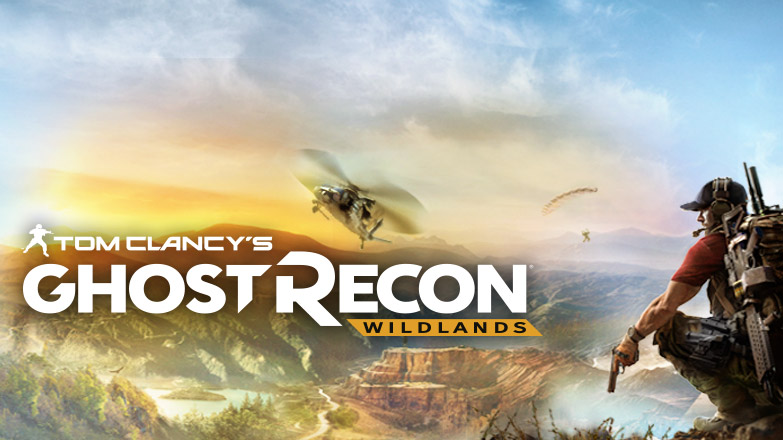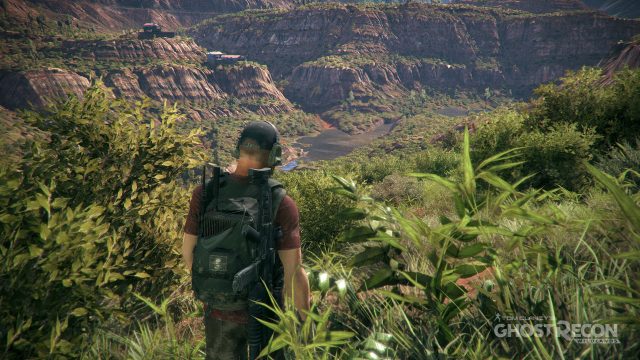
It’s the summer of 2019 and Bolivia’s cocaine industry is thriving. So much so, in fact, that it’s become the country’s identity. And, at the helm of all of this is the Santa Blanca crew — a powerful drug cartel whose success is mirrored only by its ruthlessness and arrogance.
This is the corrupt and super dangerous world that we get to step into as elite soldiers in Tom Clancy’s Ghost Recon: Wildlands.
It’s hard to believe, but almost two decades have passed since Ubisoft released its first Ghost Recon game onto Windows PCs. Since then, multiple sequels, expansions and new takes on the formula have been released onto various platforms. None were ever as ambitious as Wildlands is, though, and it’s almost staggering to think of how big this thing actually is.
Unlike Ghost Recon: Future Soldier, GRAW and the games before them, Ghost Recon: Wildlands is a truly open world experience that is mostly governed by the player. In a way, it’s the video game equivalent of a drug-fueled choose-your-own-adventure novel. That’s because nothing is really set in stone (outside of the missions and their locations), and you’re able to go about things as you see fit.
The best way to describe this thing would be to call it a modern, co-op focused take on the Mercenaries formula. And, as anyone who was lucky enough to play that game will tell you, that’s definitely not a bad thing.
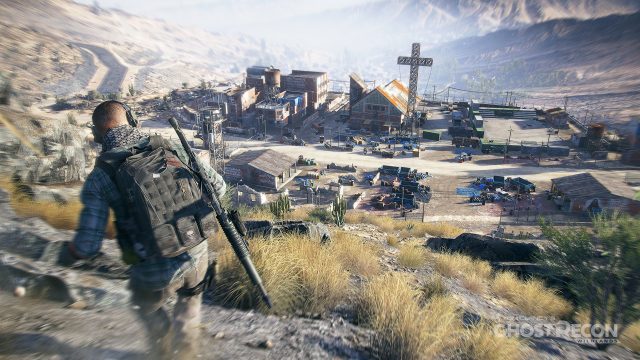
This hefty campaign begins with a cutscene, which introduces Bolivia of 2019 and those who control it. That is, the Santa Blanca Cartel and its tough as nails (and tattoo covered) leader, El Sueno. You see, the Cartel made an error when it attacked a government building and, in the process, kidnapped, tortured and killed an agent of the United States Government, because that act brought it to the top of the CIA’s most wanted list.
It’s during this opening that we’re also introduced to the Santa Blanca economy, that being its large and far reaching web of bosses, underbosses and high value targets. Massive in depth and scale, it has roots in every single part of Bolivia’s economy, not to mention its religion. That said, by starting at the bottom and working their way inwards, Karen Bowman and her team of Ghosts plan to slowly and strategically dismantle the entire thing.
The aforementioned web has four distinct sections, which all meet in the middle at El Sueno. Within it, you have the production workers and their overseers, those who handle trafficking, the influencers who spread the organization’s message, and those who look after its security. By completing at least two of these smaller webs, you’ll make your way towards the centre of it all, and will be able to deal with the boss himself. It won’t be simple, though, nor will it be a quick task, because there’s a lot to be done between the beginning and the end. You’ll have to start with several smaller tier baddies, deal with the underboss, and then take out (or capture) the head of the targeted operation.
How this works is that, when you enter a new region, it’s darkened until it’s explored. You’ll see some yellow folder icons on your map, but that’s about it. These are your keys to progression, as what they mark is vital intel. Go to these envelopes (which are usually found in well protected enemy bases or encampments), snap pictures of the information and then you’ll be able to tackle a story mission. Each region has about five or six of those, with the final one usually being taking out or capturing its HVT.
Unless you’re feeling courageous and decide to skydive into an enemy’s base of operations, your best bet is to do some recon, by either sending your manned drone in or using your binoculars to spot and mark enemies. Planning is important, and it’s often your best ally.
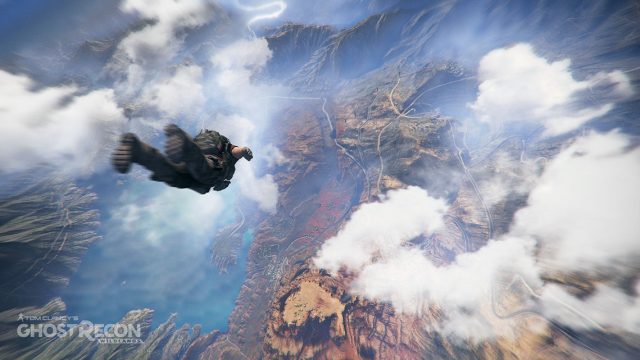
All of the above takes place in one of the largest open worlds that I’ve ever experienced in a video game. Bolivia is absolutely massive, and is made up of more than ten different provinces, each of which is governed by a different high value target. Of course, they all range in difficulty, and are designated by a rating system that uses one to five skulls to differentiate ‘easy’ from ‘hard.’ And, with the freedom that’s on offer, you can tackle any region you’d like to at any given time, though it might not be the smartest choice to start at the top and work your way backwards.
What’s great about Ghost Recon: Wildlands is that there’s never a lack of things to do. The game world is chock full of side missions, most of which involve helping the rebels who wish to get their message out and eventually overthrow El Sueno and his gang. As you move throughout the cities, farmlands, coca fields and mountain ranges of this digitized Bolivia, you’ll also come across an insane amount of collectibles, such as Bolivian historical legends, important documents, gun parts, bonus medals and skill points. There will also be lots to tag for the rebels to come and take, like first aid kits, convoy trucks, computer equipment and drums filled with gasoline. Every single thing you find or tag will help the cause, not to mention yourself via experience points and consumables that can be put towards upgrading your character and his or her arsenal. Plus, getting the rebels on your side has benefits, including mortar strikes and other helpful assists.
Speaking of characters, it’s important to note that the avatar you’ll play as is fully customizable, all the way down to their gender and race. If you want to be a badass bearded macho man, then so be it. However, those who’d prefer to go the female route can do the same. This, of course, benefits co-op, because it makes it so that all players look uniquely different.
Unsurprisingly, the best way to play this game is to get three friends together and work together as a team, or find a few randoms via matchmaking. Wildlands was designed from the ground up with co-op in mind and it shows. Not all players will want to do that, though, and some will be like me and want to go about things solo. That’s just as possible, although you’ll have to live with the odd AI gaffe.
Playing with other humans will always be best, because it gives you the option to strategically plan how you’ll go about every mission, as well as any random base infiltration you’ll do. Spotting, marking and assigning enemies is the key to success, and it’s what makes this game so immersive. Playing with the AI lets you do most of that, but not with the same level of planning and execution. Thankfully, though, the computer controlled allies are mostly quite intelligent and only screw up the odd time. It’s at those moments where they stand beside enemies and don’t kill them, or take forever to revive you when you’re downed. Enemies will sometimes do similar things, by standing beside the player and not shooting, or failing to run away from grenades.
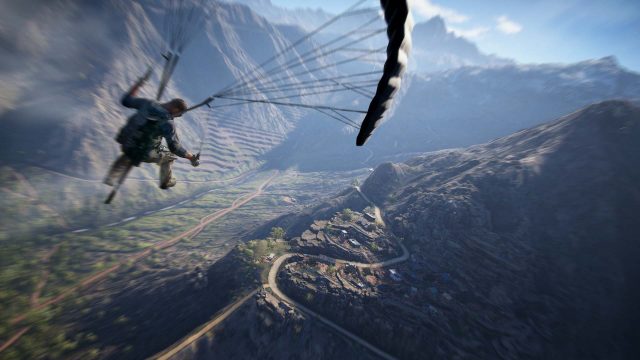
Stealth is always best, though, so try to keep those grenades for when you’ve been spotted and are truly in trouble. Or, for when you need to take something out, like barrels of drugs. Then again, C4 is probably ideal for that.
Truth be told, though, my first impressions of Ghost Recon: Wildlands were not very good. When I first started playing it, it felt dated and cumbersome, and its driving mechanics frustrated me. There was also a noticeable amount of screen tearing, framerate stuttering and visual anomalies — things that are still present, but not to the same degree. At that time, I wondered if the game was for me, and was worried that my excitement over another entry in one of my favourite series wasn’t going to live up to its hype.
Thankfully, as I’ve put more time into it, almost all of that has changed. I grew to really enjoy the game, and got used to its occasional clunkiness, including its less than perfect driving (and flight) mechanics. Most of all, I started to have fun, and lots of it. Now I can’t get enough the thing, and I think that’s because it’s a lot like a modern Mercenaries, which is one of my all-time favourites.
In-game Bolivia is also exceptional. Few titles have been able to pull off a living, breathing open world as well as Ghost Recon: Wildlands does. Not only is its map HUGE and varied, with tons of open landscape to explore and use to one’s advantage, but it’s also gorgeous at most times. Things really pop during daylight, and it’s when the sun is shining that Bolivia truly sparkles. Nighttime, on the other hand, is a great asset that can bring forth both sleeping enemies and great storm effects, but there are also times where it looks a bit muddy and overly dark.
The best thing about this game, though, is the amount of freedom it allows. Being able to steal a helicopter, fly for miles and then randomly decide to parachute into the wilderness is a treat, especially during daytime when it’s that much more visceral. It’s also nice that, despite covering serious subject matter (so much so that the Bolivian government actually filed an official complaint about how its country is portrayed in-game), Wildlands doesn’t take itself too seriously. Sure, the Ghosts may be well trained soldiers who risk their lives with every operation, but they’re not above joking, or throwing in the odd juvenile curse word. Their dialogue (and that of the other major characters) is also rather solid, in what is a storyline that is more concerned with pushing you forward than hitting you over the head with narrative.
Needless to say, I’m glad that I took on the task of reviewing Ghost Recon: Wildlands. Although it took a bit of time to grow on me, I’ve since become hooked and can’t get enough of what Bolivia’s drug trade has to offer.
This review is based on the Xbox One version of the game, which we were provided with.

